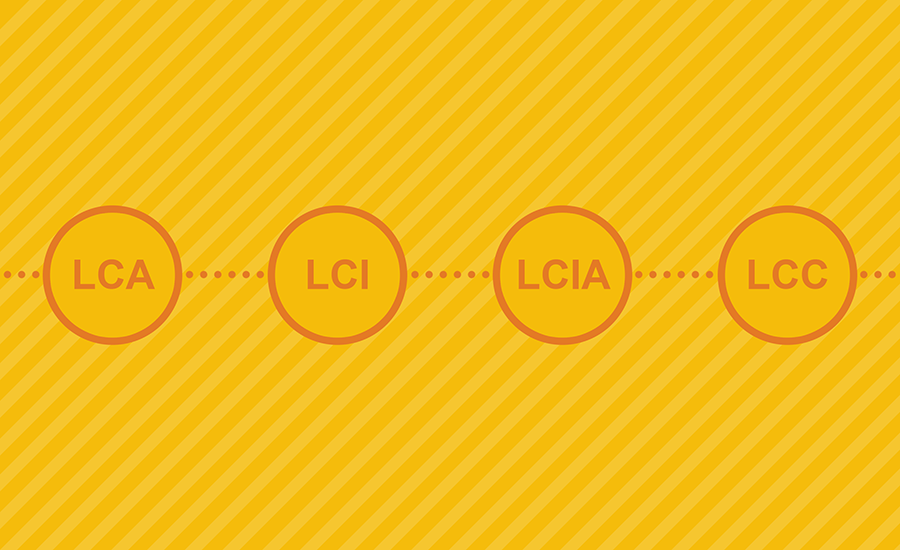
Originally published on November 4, 2020 by BNP Media through the Building Enclosure Blog.
As the building design and construction industry adopts a more holistic and comprehensive approach to assessing materials and resources for environmental impact, interest in life-cycle assessments (LCA) has risen and the market has become saturated with transparency documentation such as environmental product declarations (EPDs).
However, even a cursory review of an LCA study may yield a dizzying array of seemingly similar acronyms. Perhaps you have observed LCA, LCI, LCIA and LCC and wondered what the difference is between them. The following is a pared down summary of what each of these related acronyms refer to.
LCA
Life-cycle assessment (LCA) is a procedure for quantifying the total environmental impact of a product or service across its entire lifetime. This multi-step process includes goal and scope definition, inventory analysis, impact assessment, and interpretation. LCAs are iterative by nature as the plausibility, quality, and completeness of pertinent information changes over time.
LCI
Life-cycle inventory (LCI) is the data-collection component of an LCA. Basically, an LCI endeavors to take an account of everything involved in the product or service. LCI considers the “system” at play by tracking all the inputs and outputs involved in making the product or service. The detailed accounting may include raw resources or materials, energy by type, water by source, and the various emissions to air, water, and/or land by substance. An LCI may be extremely complex, involving any number of individual unit processes contributing to relevant supply chains (e.g., the extraction of raw materials, various production processes, transportation, etc.) along with any/all constituent substances (for which there could be hundreds).